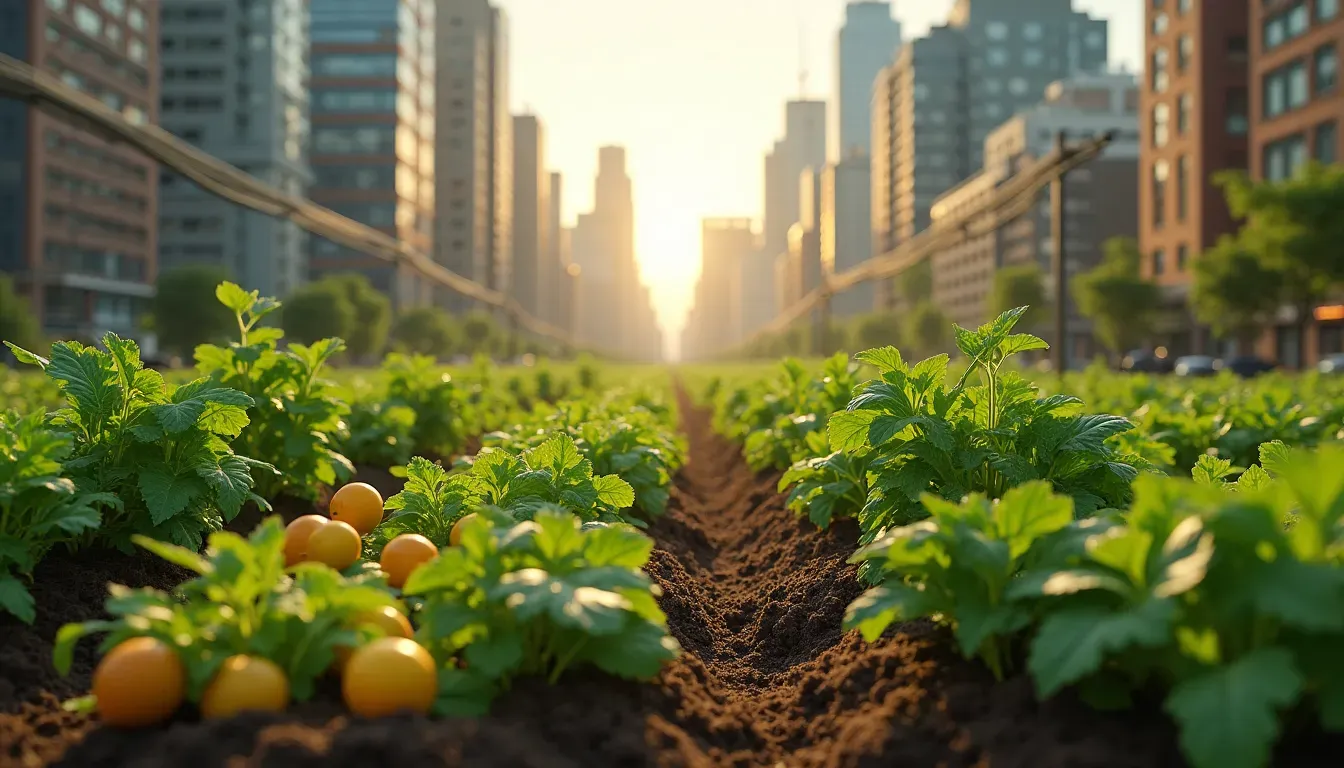Amidst the bustling life of metropolitan areas, city dwellers are finding innovative ways to connect with nature through urban farming. As skyscrapers loom and city gardening takes root, urban environments are transforming into vibrant green landscapes.
The Rise of Urban Farming
Urban farming has emerged as a vital solution for those seeking sustainable urban living. With an increasing number of people moving to cities, the demand for fresh produce and innovative agriculture practices is on the rise. By converting unused spaces into fertile grounds for farming, city gardening is not only feasible but flourishing.
Rooftop Farming: A New Perspective
Rooftop farming has become a shining example of how underutilized spaces can serve the community. These elevated gardens are perfect for lightweight crops such as lettuce, herbs, and strawberries. By using innovative techniques like hydroponics and aquaponics, urban farmers optimize their yield while minimizing space requirements.
Vertical Gardens: Growing Upwards
With limited ground area, vertical gardens offer a creative solution for city dwellers. These installations, often set against the walls of buildings, maximize small spaces by stacking layers of plants vertically. Not only do they provide fresh food, but they also improve air quality and aesthetics, contributing to sustainable urban living.
Innovative Techniques in Urban Farming
Several innovative agriculture techniques have made urban farming more accessible and efficient:
- Hydroponics: Growing plants in nutrient-rich water eliminates the need for soil and saves space.
- Aquaponics: Combines fish farming and hydroponics, creating a closed-loop system beneficial for both plants and fish.
- Community Gardens: Shared plots promote community engagement, producing local and organic food for neighborhoods.
Connecting with the Community
Beyond the practical benefits, urban farming strengthens community bonds. Community gardens encourage collaboration, where neighbors can share techniques, resources, and produce. This social aspect is as important as the ecological footprint reduction that urban farming offers.
Sustainable and Delicious
As more city dwellers embrace these agricultural innovations, urban farming becomes a cornerstone of sustainable urban living. By transforming grey cities into green wonders, these techniques not only provide fresh produce but also enhance urban life quality. The potential for healthier, self-sustained cities is ripe for the taking.
Whether experimenting with rooftop farming or supporting community gardens, each step towards urban farming contributes to a broader movement of sustainable development in our cities. Those interested in diving deeper might explore related topics such as sustainable farming practices or an introductory guide to aquaponics.
In conclusion, urban farming is not just a trend but a necessity for current and future generations. Adopting innovative agriculture techniques, city dwellers are paving the way for a greener, more sustainable future. By integrating these practices, thriving green spaces within our cities can become a reality.




